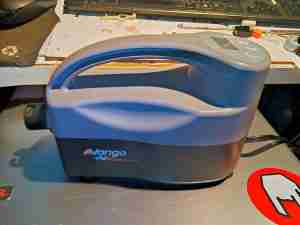
Here’s another piece of tech, the electric air pump that’s available as an optional extra with Airbeam tents. I expected this to be a centrifugal blower, but instead it’s a large reciprocating air compressor – even if the construction quality is a little dubious for a device that costs over £70.
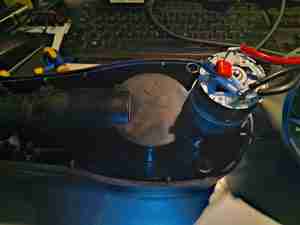
The internal parts of this pump are almost entirely made of plastic – not what I’d expect for an air compressor.
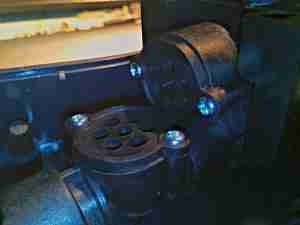
The valves are located on the end of the cylinder, the right hand on is the intake valve, the right is an pressure relief valve. The outlet valve is hidden inside the tube.
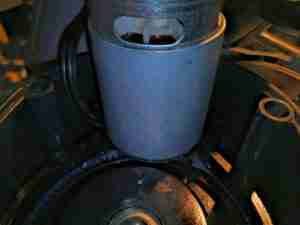
The drive motor has the same model number as the overall pump, likely made specifically for this unit. This motor does have some cooling from a fan on the armature.
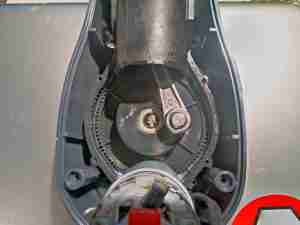
After the cover has been removed from the pump unit, the main drive is visible. The driven gear is made of plastic, most likely nylon. The motor pinion is of brass. Ball bearings are used on the crank gear, but it appears that the big end bearing is a simple bushing on the steel pin.
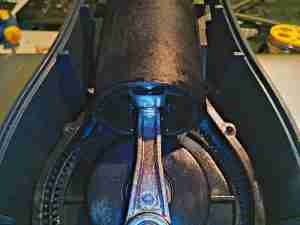
The working cylinder & piston are also made of plastic, so I don’t hold up much hope of this unit wearing well, even though the plastic feels like Nylon 66, glass fibre reinforced. Plenty of grease has been applied to the moving parts at least, to help keep the friction down. The 20 minute limit on operating time most likely has a lot to do with the almost entirely plastic construction – the adiabatic heating of the air as it’s compressed will make short work of the relatively low melting point of the Nylon.
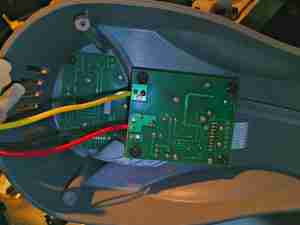
The electronics are on a pair of PCBs tucked into the upper cover, one dealing with the pressure measurement, microcontroller & power control, and the other dealing with the display & buttons.
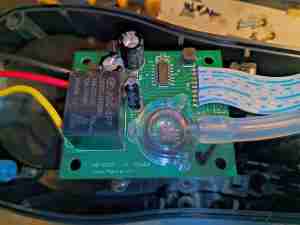
The power control board has a 10A relay to switch power to the motor, along with a small microcontroller & pressure sensor, which is under the plastic adaptor on the PCB.
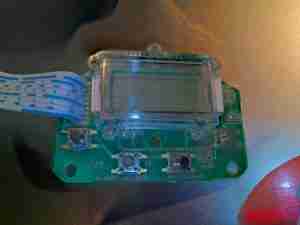
The display is a standard 7-segment LCD, with a zebra strip connection to the PCB. Underneath hides the LCD controller itself. I’m not going to take this one off, as zebra strips don’t usually work properly once removed.
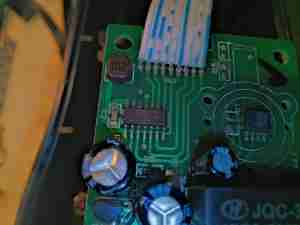
The microcontroller is an Atmel ATTINY24A with 2K of onboard flash. The pressure sensor is on the right, although I haven’t been able to decode the laser-etched number on the top. Power is handled by a small linear regulator at the bottom edge of the board, with a couple of large electrolytics for filtering.
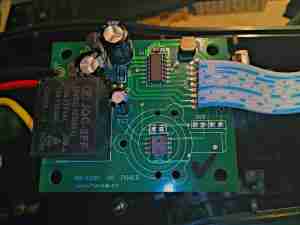
Here’s an overall view of the power control board, with a better view of the pressure sensor & relay. This also gives a hint to the actual manufacturer of the pump – with the model number HB-630A. Since this unit is rated by their own admission at 13.5A, the 10A relay is likely to take a real beating over time. I measured 11A current draw at 7PSI output pressure.
